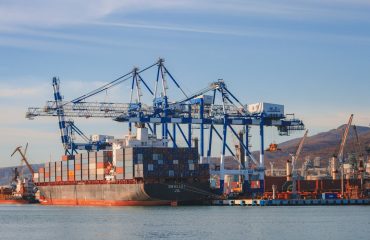body {
font-family: sans-serif;
line-height: 1.6;
}
h1, h2, h3 {
color: #333;
}
h1 {
font-size: 2.5em;
}
h2 {
font-size: 2em;
}
h3 {
font-size: 1.5em;
}
High-pressure systems are integral to numerous industries, from chemical processing and oil and gas to power generation and manufacturing. While offering significant advantages in efficiency and productivity, these systems inherently present substantial safety risks. A failure can lead to catastrophic consequences, including equipment damage, environmental pollution, and severe injury or even fatalities. Understanding and mitigating these risks is paramount. This comprehensive guide delves into the critical safety considerations for designing, operating, and maintaining high-pressure systems.
1. Design Considerations for Enhanced Safety
The foundation of a safe high-pressure system lies in its design. Careful consideration must be given to material selection, pressure vessel design, and the incorporation of safety devices. Materials must possess sufficient strength and corrosion resistance to withstand the operating pressures and temperatures. Pressure vessels should adhere to stringent design codes (like ASME Section VIII) and undergo rigorous testing and inspection. Furthermore, the design should incorporate redundancy where possible, meaning having backup systems or components to prevent catastrophic failure in case of a primary system malfunction. This might include multiple pressure relief valves or duplicated instrumentation.
Proper sizing of components is crucial. Piping, valves, and fittings must be rated for the maximum operating pressure and temperature, with adequate safety factors built in. The design should also minimize potential failure points, employing robust connections and avoiding sharp bends or abrupt changes in pipe diameter. Finally, accessibility for inspection and maintenance should be carefully considered during the design phase. Difficult-to-reach components can increase the risk of overlooked maintenance issues.
2. Operational Procedures and Safe Work Practices
Even the best-designed high-pressure system requires meticulous operational procedures and adherence to safe work practices. Thorough training for operators is essential, covering start-up and shutdown procedures, emergency response protocols, and the proper use of safety equipment. Regular inspections and monitoring of pressure gauges, temperature sensors, and other instrumentation are vital to detect potential problems early. Operators should be trained to recognize warning signs of impending failure, such as unusual noise, vibrations, or leaks.
A comprehensive lockout/tagout (LOTO) program is crucial to prevent accidental energization or start-up during maintenance or repair. This program ensures that all energy sources are isolated and secured before any work begins, preventing injuries from unexpected pressure release. Clear communication protocols should be established, particularly during emergency situations, to ensure coordinated and effective responses.
3. Regular Maintenance and Inspection for Prolonged System Life
Preventive maintenance is paramount in ensuring the long-term safety and reliability of high-pressure systems. Regular inspections, testing, and repairs are necessary to identify and address potential problems before they escalate into major incidents. This includes visual inspections for leaks, corrosion, or damage, as well as non-destructive testing (NDT) methods such as ultrasonic testing or radiographic inspection to detect internal flaws. Pressure testing at regular intervals is critical to verify that the system can withstand its design pressure.
A detailed maintenance schedule should be developed and strictly adhered to. This schedule should outline the frequency of inspections, testing, and repairs, along with specific procedures for each task. Accurate record-keeping is essential to track maintenance activities and ensure compliance with regulatory requirements. Proper documentation of all maintenance procedures also aids in identifying trends and potential problem areas.
4. Emergency Procedures and Response Protocols
Despite all precautions, accidents can still occur. Therefore, having comprehensive emergency procedures and response protocols is crucial. These plans should cover various scenarios, including pressure relief valve failures, leaks, fires, and explosions. Emergency response teams should be well-trained and equipped to handle these situations effectively and safely. Clear communication channels and escape routes should be established and regularly reviewed.
Emergency shutdown systems should be readily accessible and easily operable. These systems should be tested regularly to ensure their functionality. Furthermore, emergency equipment, such as respirators, eye wash stations, and fire extinguishers, should be readily available and regularly inspected. Post-incident investigations should be conducted to determine the root cause of any accidents and to implement corrective actions to prevent recurrence.
5. Regulatory Compliance and Risk Assessment
Operating high-pressure systems necessitates strict adherence to relevant regulations and industry standards. These regulations vary depending on the location and the specific application, but they generally cover design, construction, operation, and maintenance. Regular audits and inspections by regulatory bodies are common to ensure compliance. Failure to comply with these regulations can result in significant penalties, including fines and legal action.
Proactive risk assessment is vital in identifying and mitigating potential hazards. This involves a systematic process of identifying potential hazards, analyzing their likelihood and severity, and implementing control measures to reduce the risks. Hazard and Operability studies (HAZOP) and Failure Mode and Effects Analysis (FMEA) are common techniques used for risk assessment in high-pressure systems. Regular updates to the risk assessment are necessary to account for changes in the system or operating conditions.
By diligently following these safety considerations, industries can significantly reduce the risks associated with high-pressure systems, ensuring the safety of personnel and the protection of the environment.
SEO Tags:
- High-pressure system safety
- Pressure vessel safety
- Process safety management
- High-pressure system maintenance
- Industrial safety regulations




